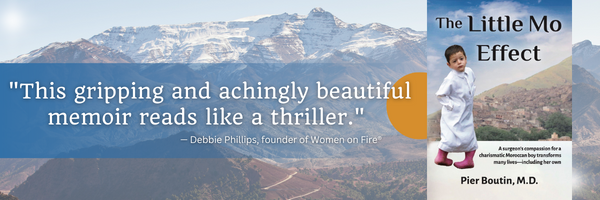By WHN Editorial Team
You may be surprised that something as simple as deep breathing aids your body in many of the same ways exercise does.

Sound far-fetched? Think about it: In order to function, cells need oxygen. It’s so vital that if we’re deprived of oxygen for more than just a few minutes, we die. Breathing is also how we rid our bodies of a key waste product, carbon dioxide. And two of the most critical systems in our bodies — the circulatory system and the respiratory system — are so closely intertwined that changes in the one invariably affect the other. Meaning, if your heart beats faster, your breathing rate increases — and, believe it or not, if you consciously alter your breathing rate, you can also alter your heart rate.
Are you ready to get the most out of breathing for your health? Here’s more about the benefits of breathing and how to get started with mindful breathing.
How breathing affects the body
Studies have shown that people who practice “mindful breathing” — taking deep, controlled breaths while maintaining a mental focus on the process of inhaling and exhaling — create a feedback loop that slows the heart rate even as it improves the flow of oxygen into the bloodstream. The effect of this conscious alteration of the body’s oxygen intake is to give the cells more of the oxygen they need — with much less effort by the circulatory system.
And this effect reverberates throughout the various body systems. The heart no longer needs to work as hard to keep oxygen flowing, so blood pressure drops — not only reducing the risk of many different blood pressure-related disorders like stroke, kidney failure or heart attack, but also relieving negative emotional states like anxiety or PTSD. As blood pressure and heart rate drop, muscles relax, which further improves emotional well-being.
These positive influences literally occur all the way down to the cellular level; research has shown that the synchronization of cardiac and respiratory rates induced by deep breathing alters the cellular membrane potentials in neurons and other cells throughout the body.
When life leaves you breathless…
You may wonder, if breathing is so powerful, how come people don’t seem to be getting all of its benefits? Well, this may be where the exercise comes in: When we exercise, we have no alternative but to take many deep breaths, because our body demands more oxygen to support our activity. However, if we are sedentary most of the time, we don’t have as much unconscious incentive to take deep breaths, and so we lose out not only on the benefits of movement but on the benefits of breathing — unless we take conscious steps to change that, whether it’s by periodically stopping for a “breathing break” or meditating on a regular basis, or some other practice that allows us time to breathe mindfully.
Plus, we can’t forget the effects that day-to-day stresses have on our breathing; we have a lot of stress in our modern lives, and that means we’re swamped by the hormones that get released when we’re frightened or anxious.
Think about the last time you had a near-miss encounter while crossing the street (or any other sudden fright): Did you gasp or suck in and hold a quick, shallow breath? Fear or anxiety often leads us to breathe ineffectively, which not only reduces how much oxygen we get (and keep in mind, in stressful situations, our hearts beat faster, which makes our oxygen transport even less efficient!) but also increases the presence of carbon dioxide, a toxic waste product, in our bloodstream. The effects of failing to breathe deeply also reverberate systemically, contributing to the chronic inflammation that is at the root of so many chronic diseases. More worrisome, the lungs (like everything else) have a “use it or lose it” limitation on their capacity; if you only take shallow breaths and never deep ones, you will not have as much lung capacity as you otherwise might (which means less ability to take in oxygen).
Getting the most from your breathing with a “breathing break”
So what can you do to encourage yourself to breathe more deeply, more often?
The obvious answer is to get more exercise — it develops greater lung capacity as well as giving you an immediate boost to oxygen intake and all the stress-reduction effects that help so much — but we know that’s easier said than done for many people.
We recommend you start working on developing a habit of stopping what you’re doing to take “breathing breaks” a few times per day.
- To counteract all the negatives of shallow breathing, you can set aside a block of time — maybe 5 to 10 minutes as a starting point, with the goal of extending the time as you progress — to just sit and breathe deeply.
- You can meditate if you like, too, but that’s not really the goal; all you’re really trying to do is bring air into your lungs, expanding them fully, holding the breath for a count of 3, and then letting it out completely.
- Maybe you start by taking breathing breaks two or three times a day — when you get up, when you have lunch, and when you’re ready for bed — or maybe you decide, “I’m going to do this every 2 hours” and set an alert on your phone as a reminder.
- The key point is that you’re going to make a conscious effort to get those breaths — and initiate the system-wide positive effects they have on your body.
As you grow more accustomed to making time to breathe, you have an opportunity to expand the habit into one that promotes still more breathing. Instead of taking 5 minutes, take 10 — and instead of sitting in a chair just breathing, perhaps you walk somewhere.
Even if you’re just walking briskly up and down the street or a hallway, moving while you breathe improves your cardiovascular efficiency and encourages even more deep breathing. In time, your 10-minute walk may become 20 minutes, or even 30… and before you know it, you’ve got regular exercise penciled into your schedule!
1 Howorka K, Pumprla J, Tamm J, et al. Effects of guided breathing on blood pressure and heart rate variability in hypertensive diabetic patients. Autonomic Neuroscience, 2013;1–2: 131–137.
2 Jerath R, Crawford MW, Barnes VA, Harden K. Self-regulation of breathing as a primary treatment for anxiety. Applied Psychophysiology and Biofeedback, 2015;40: 107–115.
3 Lehrer PM, Gevirtz R. Heart rate variability biofeedback: how and why does it work? Frontiers in Psychology, 21 July 2014. Available online at https://journal.frontiersin.org/article/10.3389/fpsyg.2014.00756/full (accessed June 19, 2017).
4 Seppälä EM, Nitschke JB, Tudorascu DL, et al. Breathing-based meditation decreases posttraumatic stress disorder symptoms in U.S. military veterans: a randomized controlled longitudinal study. Journal of Traumatic Stress, 2014;27(4):397–405..










